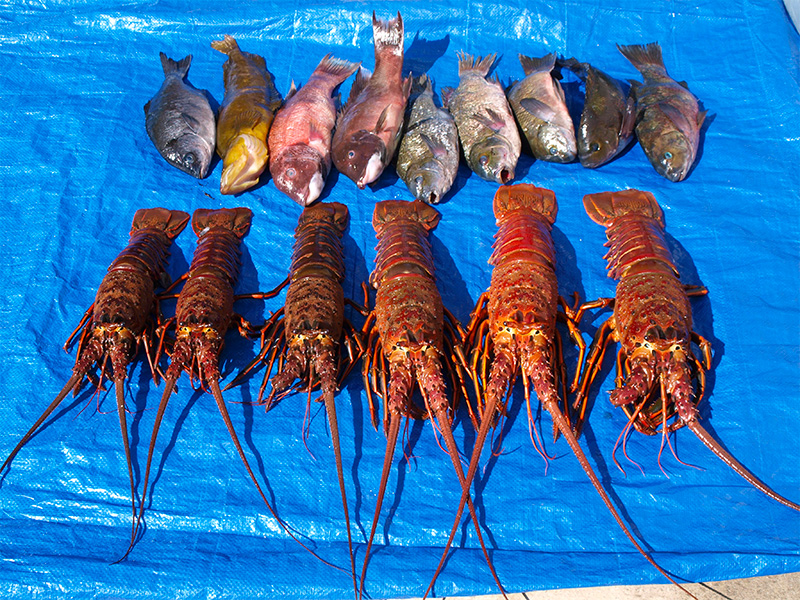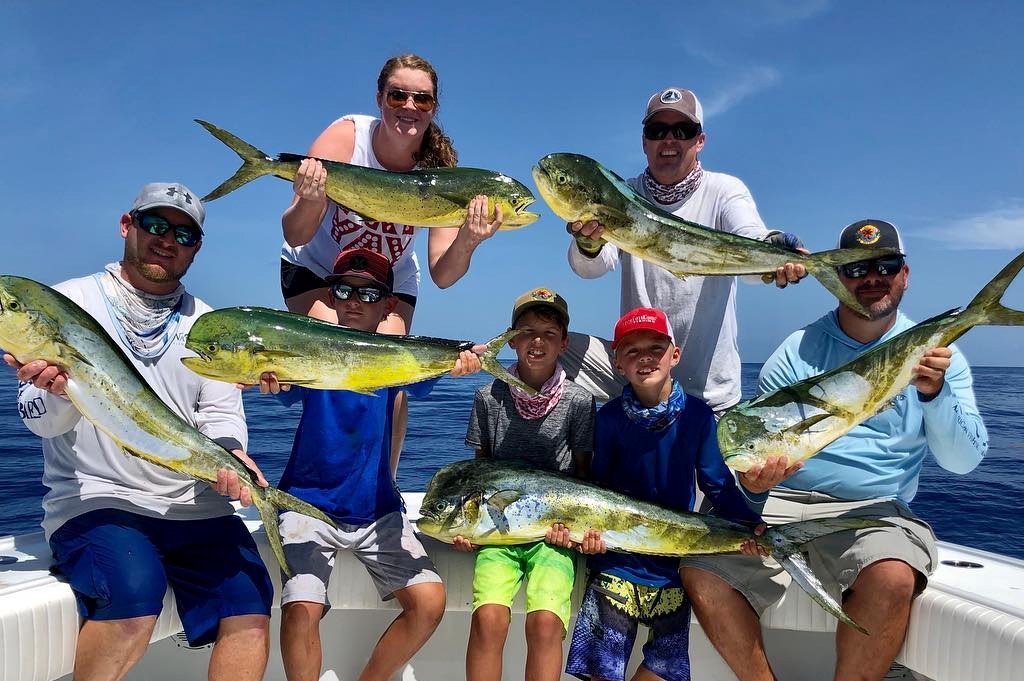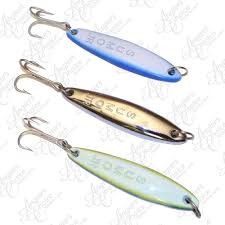Fishing: Totally Yellow tail
California Yellowtail makes my top 5 fish to catch, fight and eat. It’s usually at the top of the list for anglers on the west coast because it’s as tough and mean as a junkyard pit bull, it’s great food, and it’s one of the smartest fish that inhabit our Southern California and Baja coast. Via our coastal waters, pound for pound yellowtails are better than any pelagic tuna cruising. A 25 pound yellowtail battles harder than a 30 pound albacore, a 40 pound yellowfin tuna or a 50 pound white salmon or seabass! They can be caught best of all year round.
Yellowtail are also smarter than all of the animals mentioned above. They’re not only more careful, they’ll use any framework to smash the line. Primates are considered to be the only species using tools-yellows use kelp, cliffs, coral, pilings, and offshore oil platforms as devices for their art of escape. An albacore, hooked in the vicinity of a kelp paddy, runs deep and away from the kelp; most white seabass, hooked near dense kelp forests, runs to the open sea away from obstacles that can help free them. Yellowtail knows the precise location of each kelp rope, each sharp rock and every other challenge within 100 yards of each meal and puts every ounce of strength and heart into their fight to attain it and regain their freedom. Anytime you hook-up you better be ready for a fight because they surely will be.
They are the great west coast anglers’ game trout. They are extremely strong; they are very intelligent; they can be targeted all year round; they can be found in virtually all waters within reach of California anglers, they are delicious and they can be taken using almost all common techniques, including fly lining bait, surface iron, yo-yo style iron, dropper loop and trolling. This article is intended to clarify each of the strategies used to capture yellowtail and to improve your skill and effectiveness in controlling certain predators. Let’s look in depth at each of the techniques.
The focus of this article is to strategies of ½ & ¾ day trips and long-range boats. Private boaters can use any of these methods, but they do need to become professionals with their electronics and various chumming and trolling tactics that are not essential skills on a sport boat for the passenger.
Although yellowtail can be caught on many different live and dead baits, their favorite meals are live sardines, mackerels, and squid, which are also the baits that are most available for use. Often, they will hit dead fish, slabed filets and stripped prey.
Bait selection is important when used with live sardines or anchovies. Baits should be very healthy, robust, brightly colored and fast. The one that you can’t catch well in the bait is the one that you want on your hook. Do not pick baits from anywhere with distorted scales, red noses or eyes or white spots or red spots. The primo baits are lighter colored, almost pastel green and light grey colors, and will stand out from the darker bodied baits. They would usually swim under the darker ones and freak out when they feel your hand’s shadow or bait scoop. Seek to scoop up only one or two baits, try reducing the damage to all baits, quickly return the unused baits to the bait tank and never leave the bait scoop deep in the water.
The target is to pick the best bait, and get it as gently and quickly as possible in the water. Dunk your hand in the bait long before you touch a hook, to lubricate your palms. This will lower your skin’s friction against bait scales and minimize bait damage. Keep really gently onto the bait-do not pinch. Do not use it if you lose the bait-either dump it or boot it over the leg. Place the bait quickly on your hook, catch the line 4 inches above the hook and let the bait go. Then, walk quickly to the rail and throw the bait gently. Once you pin on the bait, you should know where you will be casting so that you can walk to that location without hesitation and without looking.
Adapt the size of the hook to your test line and bait size. Asking the Deckhand what size hook to use is always a smart idea. If you deviate from this advice go a little smaller, not bigger. Using a hook # 4 for pin head anchovies and line below 30 # check. You may use the hooks # 2, # 1 or # 1/0 for larger anchovies and very small sardines. Medium size sardines are able to accommodate hooks # 1/0 or # 2/0. Using # 2/0 to # 4/0 hooks for wide sardines and heavier-line. Mackerels and squids need hooks # 4/0 to # 6/0 again depending on the bait size and line check. The thinner wire using live bait hooks for smaller fin baits and lighter lines. Line of fourty-fifty pounds will straighten light wire hooks, so use heavy wire hooks. J-hooks are personal interests, or circle hooks. If you are going to release them due to size or good sportsmanship, circle hooks do less harm to the diver. Last but not least, small hooks are steeper and get more bites, but big hooks grab more meat, have more holding power, resulting in fewer pulled hooks and lost fish. Using smaller hooks, if the bite is very picky, scratchy or if the fish is “line or hook shy. If they are dumb, they use bigger hooks to chew everything.
An significant topic, too, is where to catch a fish. The most common technique possibly is to catch a live bait through the nose. When you have a good current, expect a long soaking time as the fish boil 100 yards off the boat or if you use a weight of some kind, just tie your bait to the nose. Gently insert the hook point sideways through the nostrils or the tiny white cartilage between the eyes and the nose end. Keep your eyes open.


You can also take your anchovies or sardines by collar lock. Be very careful and insert the hook just below the rough C-shaped material at the edge of the body right next to the gill plate and under it. The hook should cause no bleeding and the bait should dangle freely and float freely.
You can also be hooked on sardines and mackerels. Move the hook gently right under the cartilage of the skin just below the anal fins. No blood should be drawn. Blood is that you have gone too far. Butt hooking baits allow them to swim straight down and away from the boat and if there is no current, it’s a safe technique. Baits do not last as long when they are hooked to the ass, so they will never catch a lure unless you use a weight or need to soak the lure for a long time. While nose-hooked baits may also get bit if they are slowly retrieved back to the boat, this advantage is lost with ass hooked baits. Butt hooked baits need an even softer, loftier cast. If you’re not an expert on a gentle loft throw, a smooth pendulous underhand cast gets the bait moving in the right direction when it reaches the water. Butt hooked baits move more comfortably in the cold. If they avoid occasionally swimming spooling back and a slight twitch is just enough aggravation to get them to peel off another few yards of line, which sometimes causes a shot.
When in season squid is in this is a favorite bait of the yellowtail. Use a sliding sinker and hook to match the size and line check of the lure, pin the hook through the squid’s mantle and let it drift into the current.

Fly lining a lure means using no sinker, which is most efficient on the surface if the fish are boiling. You are going to want to use a small sliding sinker occasionally. You’ll always want your bait to float easily in either situation and you should always be able to feel your bait swimming and take line off your reel. Neither accept poor baits. When your bait is swimming back to the boat or not getting bit while other baits get hit, shoot your bait and find one that works.
Even lethal baits may be the slabs and strips of filleted mackerel or white fish. Much like squid, strips can be fished. Cut strips of 3⁄4 inch by 3 inch, slightly tapered from a filet and pin one onto a sliding sinker. Slabs are also used on dropper loops, and this section will address them.
The hook set to yellowtail is crucial. They sometimes catch a bait side ways until they suck it, and hold it for a few seconds. A typical strike resembles a freight train that takes up your hook and cries out to the horizon. Let it run for just 2 seconds for small baits; let it run for 4-5 seconds for big sardines; let it run for at least 6 seconds for mackerels which would seem like a lifetime. When catching your bait, point the tip of the rod right at the fish. Put the reel in gear after the necessary waiting period, and keep pointing the rod tip at the fish. Just when you feel the full weight of the “hooked cod” on your line, and if you lift your paddle, it is stripping line off under drag. Just lift the rod gently with circle hooks, and start your war. With J-hooks, they give the fish a strong hookset to drive home the point.
The war is not over until the fish is released gently or gaffed, then in the boat. The longer the fish is in the ocean, the more likely it will be killed because of the pulling out sharks, sea lions, tangles and hooks. Tighten the drag to full strike on a lever drag, or a couple ticks on a star drag and finish business when the fish is straight up and down. Just try to hold the head of the fish in the water while your deckhand is attempting to gaff it.

Iron Jigs
Using iron is one of the most productive and exciting ways to catch yellowtail. Iron is most appropriate if there is a steady bite or if fishing is wide open. The most popular colors are blue and white, tones of brown and yellow, called scrambled egg, sardine also known as “bird shit,” dorado, which has green and blue, green and white and chrome and blue. The first three are the best.
There are two types of iron and two methods for using them, surface and yo-yo. Only one requires much skill.
“Yoyo-ing” is like iron for dummies, and I love it. Yo yo irons are heavy. The most common are the Salas 6X Jr, 6X, Tady 9, Sumo 105, and some of the new heavy jigs made by High Tide.. Just drop the jig straight down to the bottom or cast it out and let it sink to the bottom, put the reel in gear, point the rod down and at the “fish” and wind as fast as you possibly can. This is where a strong, high speed reel is critical and a 6 or 7 foot stout rod is preferred. The Avet JX or HX are awesome reels for this use. Use 40 or 50 pound line and a “stupid” tight drag to minimize line stretch and to assure you can muscle him away from structure. You can not reel too fast! To save energy wind it up a third to half way, stop, drop and do it again. I’ve experienced 80% of the strikes in the lower third of the water column. You sometimes get bit on the sink, so be prepared to instantly put it in gear and reel like hell. Do not set the hook; reel through the bite, with the rod pointed down towards the fish. Most mistakes are made by trying to set the hook. Think physics – a sharp hook traveling up at warp speed will penetrate – don’t set the hook. Just reel, reel, reel. When he starts to take line you can then, and only then, give him a quick left hook, but it’s more for ego than necessity.
You can also use these heavy jigs on top. A long cast, a varied sink between 5 and 20 seconds and a fast retrieve can sometimes be lethal. Remember to keep reeling through the strike!
Surface iron is not for dummies. It really does take skill to master. Most deckhands are masters and will likely be willing to coach you for several casts and retrieves so you “get it.”
Surface irons are the lighter models of jigs and require a finesse retrieve to make them flutter and behave correctly. Popular models are the Salas 7X, Tady 45, Tady C and the new light jigs by High Tide. Action seems much more critical than color. Every surface iron may swim differently so you have to watch it and adjust your retrieve until you get the perfect wiggle, flutter and kick. Polarized glasses are critical tools. So is a long rod or jig stick of 8, 9 or even 10 feet and a smooth reel with great free spool for long casts. You can use 40 or 50 # line here depending on the size of your likely quarry and how close you’ll be fishing to structure.
A long cast, hopefully towards feeding fish, and a varied sink of between 5 and 20 seconds starts this technique. Point the rod towards the fish and begin your steady retrieve which gives you the perfect wiggle, flutter, kick that you perfected with your practice casts for that specific iron. Sometimes you will actually see the yellowtail pushing towards the iron like a submarine on the surface and it’s nearly impossible to contain your excitement. Keep calm and keep reeling. Then a savage strike. Keep reeling – do not set the hook. Sound familiar. Keep reeling through the strike, to make sure all of the line stretch is out of the mono. Only consider setting the hook when your quarry is peeling off line heading for the horizon.
There is nothing more exciting, no adrenaline rush, no experience in the world like fishing iron. Watching and feeling the surface iron getting inhaled by a big yellowtail or winding in a yo-yo iron at high speed and feeling the sudden thud of a strike takes your breath away.
Also, be sure to try the new Holy Mackerel Jigs by High Tide. Drop them 2 boat lengths behind the boat as soon as the captains asks for a chum line. These jigs drive yellowtail in the chum line crazy. The Butterfly Jigs by Shimano are definitely worth trying too. Buy several and be sure to read the Shimano brochure and/or watch the Shimano techniques CD at your favorite tackle shop. I had a demo jig and used it at Cedros Island and had 4 straight fish before I lost it to a mean yellowtail that rocked me. These jigs seem amazing and I’ll definitely be adding them to my regular arsenal.
Dropper Loops
Dropper loop fishing is one of the most productive ways to catch yellowtail, and my personal least favorite. A heavy reel and rod lined with 80 to 100# test and a lead weight heavy enough to get you to the bottom and keep you there are the basic tools. I suggest going all spectra with just a very short 10 foot dropper loop leader so there is zero stretch and minimum drag on your line in a strong current. Use a “stupid tight” drag. Tie an 18 – 24 inch surgeon’s loop, or equivalent knot, about 3 feet from the tag end of the line upon which you will tie the hook with a strong knot. Use a very large J-hook, 6/0 to 8/0 or circle hook depending on the size of your bait. Put your weight at the very tag end using the weakest knot you know, just in case the weight gets caught in the rocks with a yellowtail on your hook. Nose hook a sardine, mackerel, live or dead squid or a large slap from a filet of mackerel or white fish, drop it to the bottom, put it in gear and be ready to reel immediately to get the beast off the bottom and away from the sharp rocks. Dropper loops are not glamorous but they are deadly. Big strong shorter rods and a strong reel are musts for this style of fishing.

Eating
Now that you have caught the magnificent beast how do you prepare it. Yellowtail is absolutely one of the most delicious fishes you will catch and eat. First of all remember to bleed it and get it cold immediately. Most of your long range boats take special care to deliver perfect product at the end of the trip. Many half day to full day boats do not have the facilities to refrigerate your fish, so make sure you keep it in the shade and hose it down frequently so the evaporation helps cool the fish. Bleed your fish by nicking the gills or ask your deckhand to do this for you. Have an ice chest with plenty of ice ready at your car.

Fresh yellowtail is great baked, pan fried, grilled collar and as sashimi and ceviche. Any recipe works but none is required. Just a little salt, pepper, garlic and olive oil and care not to overcook will create a culinary delight. You can also follow any recipe in the TunaGodz.com recipe section and you will be Happy! Happy! Happy! Remember to
Get On The Fish!
By TunaGodz.com







